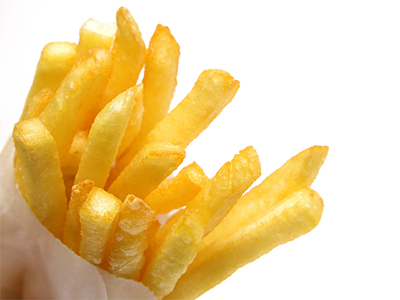In this age of taco palaces, microwave meals, and energy bars, some kids probably think the food pyramid is some ancient Egyptian relic.
Overstated? Not necessarily, when you consider that 18 percent of kids ages 6 to 19 are overweight; that diabetes, a debilitating disease strongly linked to obesity and inactivity, is rising among children and teens; and that by age 10, most overweight kids already have at least one risk factor for heart disease.
What’s the rush?
The problem is compounded by our busy lives. Fast food, notoriously high in fat, salt, and calories, nevertheless is a haven for parents trying to juggle careers, kids, and chores. Why cook when the pizzeria has a two-pies-for-one special with free breadsticks?
Still, it’s possible to get your youngsters to eat, and even enjoy, food that’s good for their growing bodies. Heading this effort, the U.S. Department of Agriculture has developed a Food Guide Pyramid for Young Children.
The young children’s pyramid features kids’ foods, like pudding cups and juice boxes, along with the more traditional servings of whole grains, fruits, vegetables, dairy, and protein. It also gives important information on portion sizes and number of servings per day: six from the grain group; three from the vegetable group; and two each from the fruit, meat (protein), and milk (dairy) groups. Sweets and junk foods are scarce, and snacks are wholesome—carrot sticks, orange slices, or apple wedges, for example. “Provide variety with options like mushrooms, broccoli, bell peppers, cucumbers, tomatoes, zucchini, and more!” says Elizabeth Murray, clinical dietitian at Augusta University Health.
The pyramid doesn’t restrict fat for kids ages 2 to 5. Dietary fat plays a vital role in early development, becoming less crucial as children age. The USDA recommends that by age 6, kids get no more than 30 percent of calories from fat.
Ideas for happy meals
Besides the pyramid, nutritionists recommend these steps for getting your child on course to a lifetime of better eating habits:
Trim the meat. Sure, it’s protein-packed, but red meat is also a culprit in heart disease and some cancers. Better to offer it as a side dish of 3 ounces or less and make fruits and vegetables the main course, experts say.
Serve less. Portion sizes need to be closely watched so kids don’t consume excess calories when cleaning their plates. Rule of thumb: Your preschooler’s portion should be two-thirds the size of a regular portion as calculated by the food pyramid.
Play traffic cop. Use a traffic-light model for your kids’ diet: Serve “green-light” foods like whole grains, rice, pasta, fruits, vegetables, peanut butter, and low-fat dairy often; serve “yellow-light” items like pancakes, lean meat, poultry, baked goods, and jams in moderation; and serve “red-light” foods like doughnuts, bacon, french fries, butter, junk foods, sweets, and soda rarely. “For example, a small fry order provides approximately 200 calories and is prepared by cooking in oil and seasoned with salt. Compared with 1 cup of sliced cucumbers at about 20 calories/cup, fries also provide significantly more fat and salt,” adds Murray, agreeing parents should be aware of the foods children receive.
Nutrient needs
Youngsters need adequate calcium, iron, and fiber in their diets. Pediatricians recommend 800 milligrams of calcium daily for 4- to 8-year-olds, then 1,300 mg until age 18.
But be careful with iron: Kids under age 10 need no more than 10 milligrams daily; too much can damage their liver and kidneys.
For fiber, use the “age plus 5” rule developed by the American Health Foundation: Children should have as many grams of fiber as their age, plus five. So, a 7-year-old should have 12 grams of fiber a day.
According to Murray, “Children should eat between 1-3 cups of vegetables daily depending on age and gender. Intake should also vary and include many colors and types of vegetables.”
“Potatoes are a vegetable; however, they are often sub-categorized as “starchy vegetables” along with corn and peas,” says Murray.
For more vegetable ideas visit:




